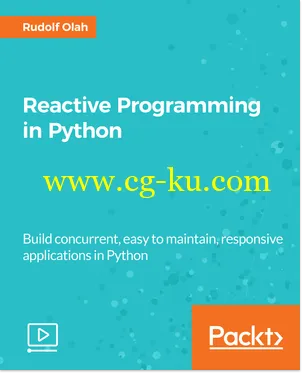 MP4 | Video: AVC 1920x1080 | Audio: AAC 48KHz 2ch | Duration: 3 hours 22 minutes | English | 590 MB
MP4 | Video: AVC 1920x1080 | Audio: AAC 48KHz 2ch | Duration: 3 hours 22 minutes | English | 590 MB
Video Description
This video will be your guide to getting started with Reactive programming in Python. You will begin with the general concepts of Reactive programming and then gradually move on to work with asynchronous data streams.
You will then be introduced to functional reactive programming and will learn to apply FRP in practical use cases in Python. You will understand how ReactiveX works and how it efficiently supports sequences of data. You will then understand the role of asynchronous programming and event-based programming in detail to build reactive extensions.
You will learn to create dataflow-based systems, the building blocks of reactive programming. This course will take you through creating, merging, filtering, transforming, and error-handling observables to extend your asynchronous code.
You will then learn to scale applications using multi-node clusters and will learn to unit-test your clusters. This video also introduces you to Reactive microservices with Python.
Style and Approach
In this video, you'll learn how to build reactive applications in a step-by-step manner. You'll build applications that use reactive programming principles, the Qt GUI framework, and the Tornado web framework. you'll test these parts and then put them together to build a real-time stock exchange.
Table of Contents
INSTALLATION AND SETUP
REACTIVE EXTENSIONS FOR PYTHON
REACTIVE GUIS AND DATA FLOWS WITH QT AND RXPY
REACTIVE WEB SERVERS/CLIENTS WITH THE TORNADO WEB FRAMEWORK
TESTING REACTIVE GUIS AND A CLUSTER OF WEB SERVERS/CLIENTS
BUILD A REACTIVE REAL-TIME STOCK EXCHANGE

Password/解压密码
-0daydown


发布日期: 2018-10-09